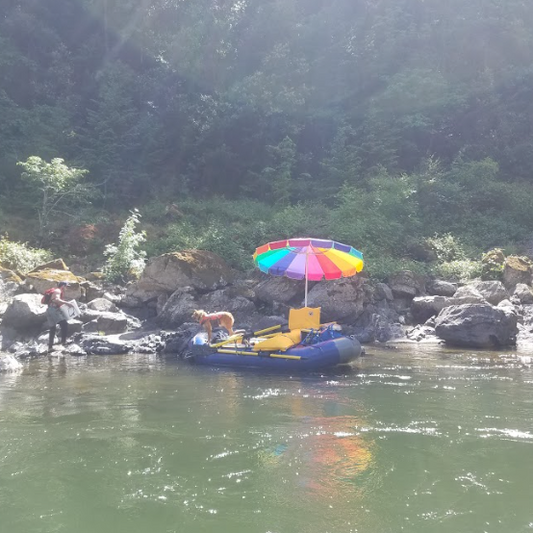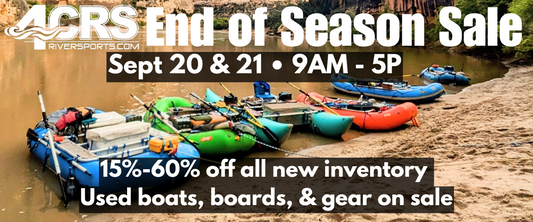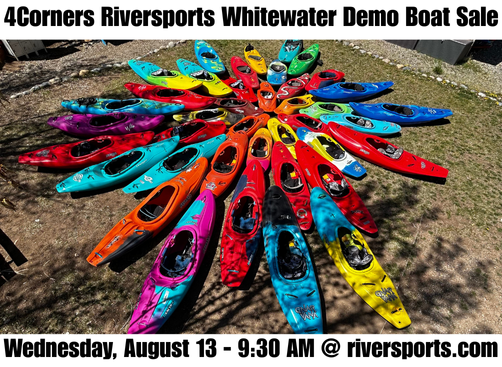In November 2023, Team 4CRS went on a kayak expedition to Nepal to paddle some classics before they are dammed or dewatered. Unlike the US, many countries don't have organizations that protect rivers like American Whitewater. We wanted to see firsthand the threats to rivers that are considered some of the best multi-day rivers in the world.

The TEAM - "The Porcelain Painters"
With any kayak expedition the team makes or breaks the trip. You don't have to be on the same ability level but everyone plays their role as a team member. Most importantly, every team has to have a name. After a few days in Kathmandu, we landed on the name of "The Porcelain Painters" for obvious reasons…. needless to say Cody Beach made the team. All jokes aside, Cody has been on a tear the last few years picking off some of the worlds biggest rivers. With already one previous trip to Nepal and extensive expedition experience, Cody was a wealth of knowledge when it came to logistics, charging downstream and keeping us well fed at camp. Claudia Quenelle was unofficially the expedition doctor and the team's token female. Working as an ER Doc she knew exactly what to have in our first aid kit. Cruise Quenelle has an extensive track record when it comes to kayaking all over the world. He knows the ins and outs when it comes to having a good time on the water. Rob Scanlon played a key role in getting the trip organized and keeping our map game on point while perfecting our nightly milk tea. His hard charging mentality combined with his cool collective mindset made him an integral part of the team. Nick Terry and Paul Heffern made an all star appearance on the team for a lightning strike mission of the Humla Karnali. Nick Terry brought along an easy going nature, perseverance, and some real authentic beef jerky. Paul Hefferan kept morale high with cheetos and outrageous southern quips.

TRAVEL to NEPAL
Any international expedition requires lots of planning; however, choosing to fly across the world with a kayak requires some extra forethought. Whenever we are planning an international trip, we often refer back to this on which airline companies allow kayaks. In our experience, the best way to guarantee you can get your boats to your final destination is to first decide which international airline you are going to fly that has an explicit kayak baggage policy. We've had great experiences with Qatar, Air Canada and Emirates. Next, look up their US hubs and if not your local airport then book an Alaska or Southwest (the 2 most friendly domestic airlines to fly with kayaks) ticket to that hub city. For this trip we drove to Denver, flew Southwest to Los Angeles International Airport (LAX) and then checked in there for our international flight on Qatar.

Arriving to Kathmandu airport can be overwhelming. It's chaotic but luckily for us it was late enough at night that it wasn't super crowded. We would recommend you get online a few days before your trip and pre-purchase your tourist visa. You still have to stand in a separate line to pay for the visa before you go through customs but it saves you one step and a line. It's best to bring new cash to pay for this rather than hoping the credit card machine is working. It seemed that if you brought your own straps, you likely could find a taxi that could handle boats on top but we pre-arranged for a pick up and had a truck waiting which made our transit to the hostel smooth.
ON THE GROUND LOGISTICS
Nepal is known for being a kayak mecca and there are tons of online write ups (much better than this one), the Nepal Whitewater Guidebook, and lots of raft companies operating out of Kathmandu. We have talked to plenty of paddlers who have managed all of their own logistics. That being said, things move at a different pace over there. We opted to work through Himalayan Outdoor Project run by local legends Rajiv and Anup. If you are considering a trip with a timeframe under 4 weeks we would highly recommend using these guys. For a super reasonable price, they handled all of the on the ground logistics. It allowed us to take 45 minute domestic flights while sending our boats on the 20+ hour bus rides without us. If you are planning to go anywhere outside of Katmandhu you will likely need permits. Again, it is possible to navigate this on our own but would require extra days in the city. Rajiv took care of this for us. We landed and that day handed over our passports to start the permit process. When planning your trip, be aware of local holidays and plan for a few days in Kathmandu to allow for boats to arrive on next flights, permits to come through and do some necessary supply shopping. We did find one large grocery store that allowed us to stock up on more dried goods. Some of the things we had a harder time finding in Nepal were snacks (bars, meat sticks, etc.), powdered PB, freeze dried meals, powdered milk, nuts. Kathmandu is very eye-opening and most expeditions to the Himalayas start here. With its bustling streets and its giant temples, it is a must see.

Now on to the fun stuff... the kayaking.
THULI BHERI & BHERI - 10 days, ~220 miles
We based out of Nepalgunj. Many groups fly into the region for this trip but we opted to save some money and take the multi day drive up the river. It took us 2 days and probably about 16 hours in a truck with 4 painters crammed into the backseat to arrive at our put in destination of Tirpurakot . While driving up was crammed and slower, it also was an awesome way to stop along smaller villages and take in the culture, scenery and river at a slower pace. We were stopped several times by large bulldozers building the road. We got to experience a local badminton festival and celebrity performance where we were honored and invited on stage to be blessed with Tika.


We put on the river and right away were impressed by the speed, steepness and continuous whitewater of the Thuli Bheri. Many large horizon lines loomed; however, we were surprised by how runnable each set of rapids were. The classic Golden Canyon did not disappoint and the marque rapid was just as stunning as pictured. There were moss covered walls, soaring eagles and plots of farmland up impressively steep mountains. The first night we were awakened in our tents by a 6.7 scale earthquake. Luckily we were sleeping in a field of wild marijuana a safe distance away from falling rocks. Locals in the river corridor were not so lucky. Death tolls were estimated at nearly 150 people and our truck guide who had left us the night before was the only one to survive in a collapsed hotel. It was a surreal feeling passing large riverside funeral pyres as the dead were cremated. We felt very lucky to have survived. We were blown away by the locals' resilience, continued kindness and generosity even in a time of death and tragedy.


#CAMP
We moved quickly and efficiently as a team down the river and finished the whitewater section, (a total of 70 miles of Himalayan Class IV/V) in 3.5 days although we had budgeted for 5-7 days. With our extra time we opted to rack up some more river miles. We continued downstream on the Bheri river. It was at times scenic with fantastic camping intermixed with flat, boring and 30 locals staring at us as we camped. We arrived at the confluence with the Karnali and completed a total of 220 miles in 10 days. After 10 miles we reached our takeout in Chisapani. The Thuli Bheri was an incredible experience with quality whitewater - we would highly recommend it.


HUMLA KARNALI & LOWER KARNALI - 9 days, 240 miles
After the Thuli Bheri we returned to Nepalgunj to meet the rest of our team for the Humla. Nick and Paul were a breath of fresh air to the team. Catching rides on overloaded rickshaws we toured around the city taste testing food and restocking for our next river while watching the locals celebrate the holiday of lights, known as Tihar. The next day we arrived at the airport for our chartered flight. After waiting around and playing hacky sack on the runway we boarded our flight on a Twin Otter. The 45 minute flight took us over a huge Himalayas, rice patties and the Mugu river. Quickly after arriving at Simikot, we paid our tourist fee and found someone with a tractor and trailer to take us 3000 feet down to the Humla Karnali. If we were to do this again we would give ourselves a day in Simikot to enjoy the stunning scenery, tea houses and a trek. After putting on a small feeder creek we quickly arrived at the turquoise Humla Karnali. After 45 minutes, we reached our first of a sequence of many portages. With heavy boats packed for 10 days on the water this series of portages was not easy and took us most of the afternoon. These were not obvious portages often starting in flat pools and we highly recommend you get beta and map points before doing this trip.



The scenery and river were mind blowing with big Class Vs, huge steep walls, and waterfalls mixed with palm trees and ponderosa pines. This continued throughout the next six days of running the impressive whitewater of the Humla. The Humla was not as continuous as the Thuli Bheri, but certainly was more demanding as the rapids were larger, higher in volume and there was much more portaging with heavier boats. The stress peaked as a team member became ill in the heart of the largest class 5 gorge, forcing us to camp amongst the rocks of one of the loudest, largest rapids on the river. We had heard lots of reports of teams getting taken out by GI illnesses while on the Nepali rivers, but we were diligent in double filtering our water and think this saved the majority of us from the infamous Nepali belly. Luckily with a little milk tea, rest and a warm night we were all able to resume traveling together downstream for the final day.

Kayaker: Rob Scanlon

Kayker: Paul Heffernan


Kayaker: Cody Beach

Kayakers: Claudia Quenelle & Rob Scanlon
It was bittersweet to arrive at Rockum Karnali. We had accomplished our goal but were left wondering how many generations to come would have the privilege of experiencing this magical place. Per our team motto, there was a town so we bought samosas and beer and spent some time celebrating with the locals. Nick watched a young local who had never been in a kayak back ferry, draw stroke and brace all without any instruction. He decided to leave the kayak with this young prodigy and his family. We connected them with Rajiv and the Himalayan Outdoor Project given their commitment to create opportunities for athletes from remote areas with limited resources.

Nick and Paul took a truck back to Katmandhu while the other four team members made our way downstream to see the world famous lower Karnali. This classic section of river did not disappoint. It felt like the most remote of the sections we had done until this point. The large sand beaches, huge blue wave trains and monkeys running along the shore made for a lovely end to our trip.

Photo credit: Rob Scanlon
The team ended the trip with a delicious tandoori Thanksgiving meal and nightclub dance party before parting ways. Cruise, Claudia, Nick and Paul made their way back to the USA while Cody and Rob continued on to paddle the Arun and Sun Kosi rivers.
This was a life changing trip. We feel lucky to have shared it with such a great crew. If you love long multi-days, sketchy roads, epic whitewater and delicious food, put Nepal high on your list for your next kayak adventure and make sure to visit 4CRS for all your gear needs!
Special thanks to Himalaya Outdoor Project & 4Corners Riversports.








